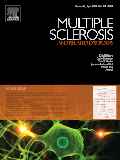
“The pharmacological strategy for the treatment of schizophrenia has not changed in the six decades since chlorpromazine was introduced in 1952. Although several newer agents have recently gained approval, the mechanism of action of antipsychotics is still largely based on normalising dopaminergic neurotransmission which does not adequately address the symptomatology of a very complex disorder. Moreover, they cause side effects such as extrapyramidal motor symptoms and metabolic syndrome which can worsen the patient condition.
In this regard, preclinical and clinical studies since the ’90s have demonstrated the antipsychotic potential of cannabidiol (CBD), a derivative of the cannabis sativa plant which does not have the adverse psychoactive properties of tetrahydrocannabinol.
In particular, CBD has been shown to be effective in attenuating the positive symptoms of schizophrenia with a negligible side-effect profile.
Accumulating evidence implicates dysfunction of the mammalian target of rapamycin (mTOR) signaling cascade in the pathophysiology of schizophrenia. Thus, in a recent paper, Renard et al. (2016) used the amphetamine (AMPH)-sensitisation protocol in rats to investigate whether the antipsychotic effects of CBD were mediated by its effects on the mTOR cascade. Specifically, they focused on the nucleus accumbens shell (NASh) which has been implicated as a therapeutically relevant ‘hot-spot’ for antipsychotic action and is one of the brain regions targeted by CBD.
Thus, together with the fact that CBD alone had no behavioural effects, the behavioural findings reinforce the potential utility of this cannabinoid as an antipsychotic for the treatment of the positive symptoms of schizophrenia.”
http://medicalxpress.com/news/2016-08-antipsychotic-mechanism-action-cannabidiol.html








